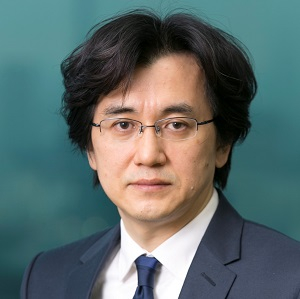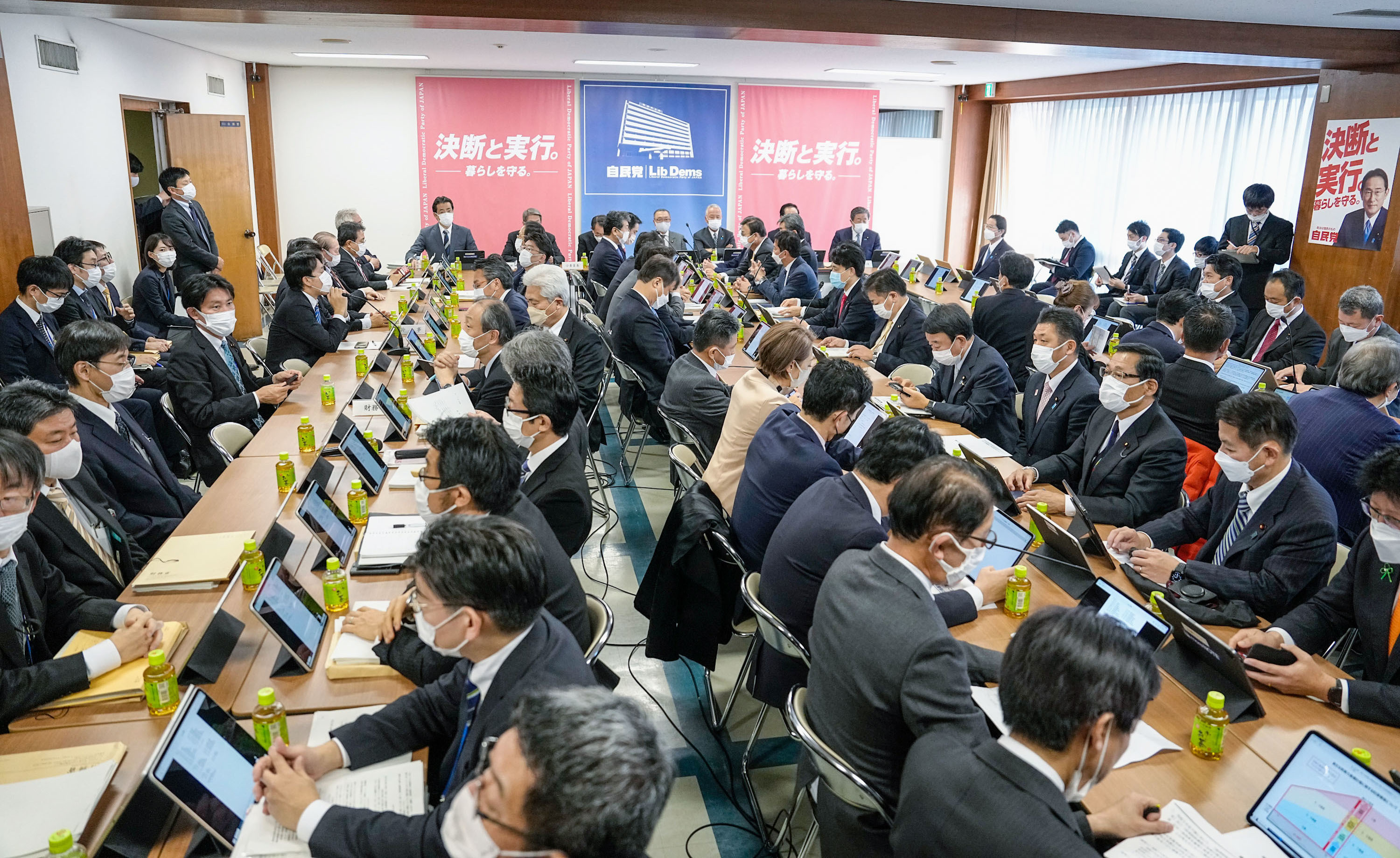- Article
- Political Institutions
Getting to the Root of Amakudari: Sweeping Reform Needed to Close the Revolving Door
June 13, 2017

A scandal at the Ministry of Education has politicians scrambling for a fix to plug loopholes in the laws governing reemployment of retired bureaucrats by private and nongovernmental organizations. In an article originally published in Japanese in Nikkei Veritas , Sota Kato makes the case for administrative, economic, and labor-market reforms to remove the powerful incentives behind amakudari .
* * *
On March 30, the Ministry of Education, Culture, Sports, and Science (MEXT) released the final report on a government inquiry into ministry officials’ involvement in arranging post-retirement reemployment for senior bureaucrats. The probe, launched in response to revelations that surfaced earlier in the year, uncovered systematic efforts to circumvent the law by having retired (instead of active-duty) MEXT officials arrange with academic, business, and quasi-governmental institutions for preferential hiring of retired bureaucrats—a practice known as amakudari . To date, some 43 officials have been disciplined in connection with the scandal.
The malfeasance of the officials involved, some of whom apparently conspired to mislead the government’s panel on reemployment, certainly merits harsh punishment. But such punishment is unlikely to prevent the recurrence of similar incidents farther down the road.
Limits of Legislation
The practice of amakudari (literally, “descent from heaven”) has been the target of intense public scrutiny and criticism for some 20 years. During that time, the government has moved repeatedly to tighten the laws and regulations governing the reemployment of retired civil servants, but to little avail. The latest legislative fix was a revision of the National Public Service Act, whose 2008 amendment was advanced by the first Shinzo Abe cabinet (2006—07). The revised regulation, which came into effect in 2008, prohibits government officials from assisting in the placement of an official or former official in a business or nonprofit organization. As revealed by the recent scandal, the Ministry of Education (along with other agencies, it appears) was quick to exploit a loophole by using retired officials to act as intermediaries.
Why is amakudari so resistant to treatment? The basic reason is that the legislative measures adopted have attempted to suppress the symptoms without addressing their cause. The fact is that both the government bureaucracy where these retirees originate and the business, nonprofit, quasi-governmental, and academic organizations where they are placed have strong incentives for continuing the practice. As long as this persists, each new regulation will merely give rise to another workaround, in an endless game of amakudari whack-a-mole. There is little reason to suppose that any different fate awaits the bill recently submitted by the Democratic Party and its allies, which would extend the mediation ban to former government officials.
Granted, sweeping prohibitions backed by stiff penalties might ultimately succeed in stamping out amakudari . But such draconian measures would throw out the baby with the bathwater, inhibiting the healthy and truly beneficial movement of human resources between the private and public sectors. Defining the difference in legal terms between such good amakudari and the kind of bad amakudari that is forcibly imposed on the receiving organizations is no easy task. And it seems that as long as one leaves breathing space for the positive practices, the problematic varieties find a way of slipping in through the cracks.
Why Bureaucrats Need Amakudari
To keep amakudari in check, we need to begin by identifying the conditions that create such a powerful incentive for golden parachuting.
Within the civil service, one of the biggest factors is the practice of early retirement. By custom, career-track bureaucrats are expected to have retired by their late fifties, around the time that one lucky member of their cohort in each ministry is promoted to the level of vice-minister—the top administrative post. Under such circumstances, the typical bureaucrat needs a decent post-retirement position if he is to secure his family’s financial future. Without a tacit guarantee of amakudari in Japan’s illiquid job market, the best and brightest bureaucrats would leave government while still in their twenties or thirties, when their market value is highest, rather than wait until they are nudged out later in their career.
Another contributing factor is the lack of mobility in Japan’s labor market owing to the custom of lifetime employment. Among those seeking to switch employers in mid-career, people with specialized technical or professional expertise are in relatively high demand. But the personnel systems of Japanese government agencies are designed to groom administrative generalists. Lacking high-level expertise in a specialized field, fifty-something bureaucrats set adrift on the Japanese job market would find it extremely difficult to find decent reemployment. Accordingly, they have little choice but to rely on institutional placement services.
Amakudari has become entrenched as an integral part of the Japanese civil servant’s professional lifecycle. Further attempts to crack down on the practice will merely drive the bureaucrats, whose jobs are on the line, to ever-more-ingenious ways of circumventing the law—or else provoke fierce resistance. What we need to do now is address the conditions that create such strong supply-side incentives for amakudari .
The first step is to do away with the practice of early retirement. Although this had the advantage of giving young, talented civil servants greater opportunities to apply their skills, it cannot realistically be continued in the face of the ongoing public outcry over amakudari . Indeed, in the face of a dwindling supply of organizations looking to recruit ex-bureaucrats, many government agencies have raised the age at which a senior official can be promoted to vice-minister and to delay top officials’ retirement. They need to go further and ensure that civil servants can preserve a title and salary commensurate with their seniority up to around age 65. This would greatly reduce the incentive for amakudari on the bureaucracy’s side.
Ideally, such measures should be accompanied by reforms to open up Japan’s mid-career job market and address the more fundamental issue of increasing labor fluidity, but such structural reforms will take time. A more attainable short-term goal would be to create a personnel system geared to nurturing specialists rather than generalists to provide early retirees with real, marketable skills.
Why Outside Organizations Play Along
Next, let’s look at the demand-side incentives for amakudari among businesses, universities, and other organizations.
Certainly in some cases, the skill set and knowledge of the retired bureaucrat is directly applicable to the organization’s core business or mission. More often than not, however, the hiring organization is motived by expectations of a quid pro quo from the government. Such expectations lie at the root of the practice’s persistence.
An earlier cross-industry analysis of amakudari revealed a strong negative correlation between the number of retired bureaucrats employed and an industry’s future growth as measured in output. It seems that declining industries and sectors, which rely—or hope to rely—heavily on government largesse, are a prime destination for retired bureaucrats, even when they are unlikely to have the skills needed to turn the industry around.
This dynamic may explain why Japanese universities, which are struggling with falling enrollment, have emerged as key employers. The most recent scandal broke when it was found that Waseda University had hired a retired MEXT official almost as soon as he left the ministry. It seems doubtful that Waseda expedited the appointment because the official boasted higher competencies in the university’s core mission of education and research than their new peers.
The best way to reduce the incentive for amakudari on the demand side is through acceleration of free-market regulatory reforms and reduction of government bloat. In a free and competitive environment, businesses that cannot compete are quickly forced out of the market. Universities, likewise, will need to buttress their competitiveness by channeling their resources into high-priority areas of education and research—their core mission. If universities were so oriented, they would be giving preferential treatment to researchers with outstanding track records, not to retired bureaucrats.
MEXT has been forcefully spearheading reforms of university-level research and education since the 1990s. The latest amakudari revelations suggest, unfortunately, that these efforts have fueled competition not for higher research and educational standards among universities but for closer ties with the ministry, as evidence by the rise in the number of faculty positions filled by ex-bureaucrats since the reforms began.
The civil service has played a pivotal role in postwar Japan’s political and economic system, and amakudari has evolved as an integral element of that system. If we want to eliminate the evils of amakudari , we must overhaul this system by encouraging labor mobility, revamping a personnel system geared to the training of generalists, achieving free and fair competition, and downsizing a bloated bureaucracy. Now is the time to abandon the Band-Aid approach to amakudari and get to the heart of the problem.
Translated from “Amakudari, genbatsuka wa tokkoyaku narazu,” Iken Takken, Nikkei Veritas , April 16, 2017; augmented with additional text by the author. Courtesy of Nikkei Inc.




